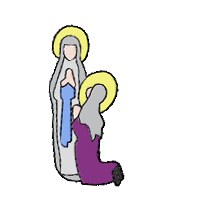ART & DESIGN
‘Every human is an artist’ Don Miguel Ruiz

At St. Bernadette’s, through Art and design, we aim to encourage self-expression, creativity, confidence and a sense of individual identity. We aim to inspire a love of art in our children and an understanding of how art and design reflects and shapes our history and heritage, and contributes to the culture, creativity and richness of societies all over the world.
As with all our subjects, our subject design interrelates different strands of knowledge:
Substantive knowledge represents the art content that is taught in each year group. In planning, this knowledge is the content we want pupils to know and remember including tier 3 vocabulary.
We use the following themes in art and design to provide opportunities for pupils to critically evaluate artists’ work; evaluate style and technique and appraise a piece of work across a rage of artists:
- Line: Exploring marks that span the distance between two points – straight or curved, 2D or 3D, implied or abstract
- Shape: Exploring the result of closed lines – shapes that are two dimensional, geometric or organic
- Colour: Exploring hue and intensity
- Value: Exploring the lightness and darkness of a colour
- Texture: Understanding the way something feels, or looks like it would feel
- Space: Understanding the way in which line, shape, form and colour can be manipulated to create space
- Form: When a shape acquires depth and becomes three dimensional it takes on form
Disciplinary knowledge represents the skills of an artist. This knowledge is broken into key categories of knowledge and is vertically integrated into progression sequences across key stages so that we can ensure progression and provide opportunities for pupils to build, revisit and deepen their knowledge and understanding over time.
Assessment in Art is more than just knowing artists, movements or media. We assess the pupils’ ability to apply their knowledge through our clearly defined outcomes at the end of each unit of learning. This provides information on the children’s ability to use a combination of substantive, disciplinary and procedural knowledge.
